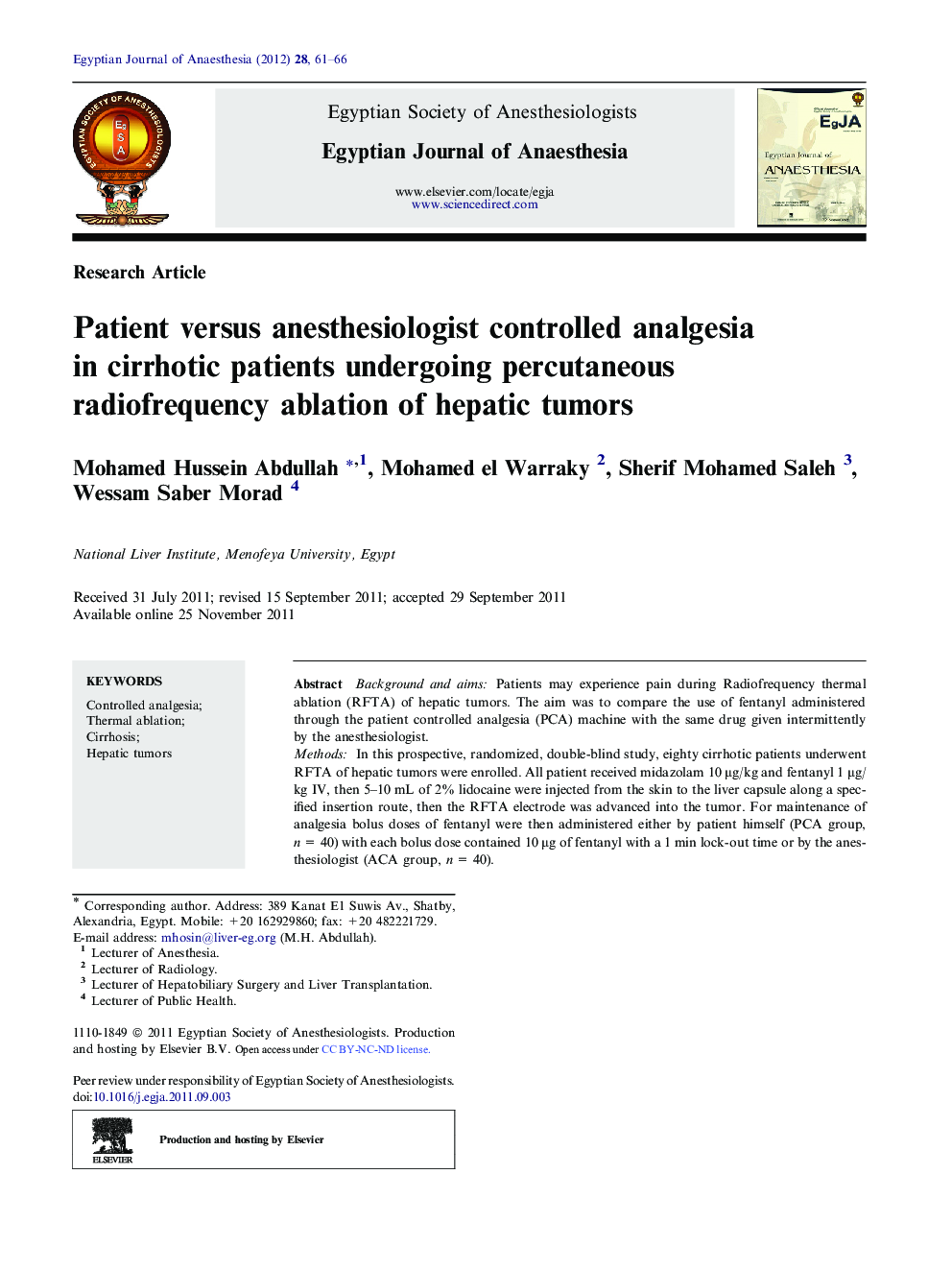| Article ID | Journal | Published Year | Pages | File Type |
|---|---|---|---|---|
| 2756488 | Egyptian Journal of Anaesthesia | 2012 | 6 Pages |
Background and aimsPatients may experience pain during Radiofrequency thermal ablation (RFTA) of hepatic tumors. The aim was to compare the use of fentanyl administered through the patient controlled analgesia (PCA) machine with the same drug given intermittently by the anesthesiologist.MethodsIn this prospective, randomized, double-blind study, eighty cirrhotic patients underwent RFTA of hepatic tumors were enrolled. All patient received midazolam 10 μg/kg and fentanyl 1 μg/kg IV, then 5–10 mL of 2% lidocaine were injected from the skin to the liver capsule along a specified insertion route, then the RFTA electrode was advanced into the tumor. For maintenance of analgesia bolus doses of fentanyl were then administered either by patient himself (PCA group, n = 40) with each bolus dose contained 10 μg of fentanyl with a 1 min lock-out time or by the anesthesiologist (ACA group, n = 40).ResultsPCA group received significantly higher doses of fentanyl with a mean value of 53.5 ± 13.5 μg/session, while it was 36.7 ± 13.4 μg/session in the ACA group. Patient satisfaction rates were higher in the PCA than ACA with mean values of 8.32 ± 0.62 and 7.85 ± 0.73, respectively. The mean pain score was statistically lower in the PCA group than the ACA group with mean value 3.37 ± 0.70 and 3.97 ± 0.89, respectively. There was significant difference in the mean values of the demand/ delivered ratio between groups to be 1.47 ± 0.28 and 2.50 ± 0.73 in PCA and ACA groups, respectively.ConclusionPCA with fentanyl proved to be a better alternative than ACA in terms of patient comfort and satisfaction.
